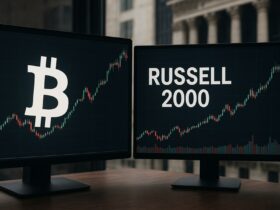Bitcoin (BTC) is positioned at the center of the global financial scene, reaching levels close to its all-time high of $73,800 and generating expectations that it could break its own records.
What is behind this rise? Various factors, both long-term and short-term, are coming together to push the price of bitcoin to new heights, and everything seems to indicate that we are facing a decisive moment.
To understand this trend, we must take into account one of the most important events on the bitcoin calendar: the halving.
This process, which halves miners’ rewards approximately every four years, has a history of bullish precedents.
With each halving, bitcoin becomes scarcer and harder to obtain, which has historically pushed the price higher.
In April of this year, the most recent bitcoin halving occurred, and now, six months later, it seems that the bullish cycle has been activated.

This period usually marks the start of large price rises, which many analysts consider a reliable trend.
Bitcoin, which follows the pattern of market cycles driven by supply and demand, is at a time when the reduced availability of new coins on the market is combined with renewed buying interest.
Monetary policy and “cheap money”
Another relevant factor, as CriptoNoticias has explained, is the current situation of interest rates in the United States. The Federal Reserve, to stimulate the economy and face financial challenges, has begun to apply interest rate cuts, which directly impacts the market for assets considered “risky”, such as bitcoin.
Low rates make Treasury bonds – considered one of the safest investments globally – less attractive in terms of yield. This leads investors to look for alternatives that offer higher returns, and bitcoin, which has demonstrated solid performance, is positioned as one of the most attractive options in the context of low interest rates.
In addition, the low rate policy facilitates access to credit. Companies and individuals can borrow money at a lower cost, increasing the liquidity available in the markets. This increase in liquidity can be directed, in part, towards risk assets, and bitcoin appears as one of the beneficiaries in this environment.
The elections in the United States and the positions of the candidates
Another important reason for the recent rise of bitcoin is the political climate in the United States. Next week, The country (which is the main financial power in the world) will elect its presidentand both major candidates, Donald Trump and Kamala Harris, have included bitcoin and cryptocurrency issues in their campaign promises. The anticipation surrounding these elections is putting the markets in a state of maximum attention, and the bitcoin sector is no exception.
Both candidates have expressed relatively open stances towards the bitcoin industry, although the market seems to be leaning towards a victory for Trump, who has shown a clearer and more direct approach towards bitcoin adoption.
Investors welcome the fact that a proactive government in terms of policies related to cryptocurrencies can open doors to greater acceptance and integration of bitcoin into the traditional financial system.
An optimistic and growing market
With all of these factors at play, bitcoin finds itself in a unique position: supported by its own halving cycle, driven by the Fed’s monetary policy, and supported by political expectations in the United States.
No wonder the market is full of optimism, and many believe bitcoin is ready to reach new heights.






Leave a Reply